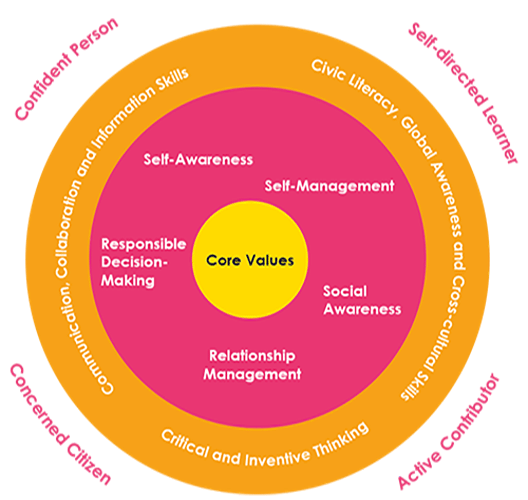
"Sun Heng, you do the part on the impact of plastic pollution," Alan said as he pointed at Sun Heng.
"Why should I listen to you? I am more interested in just typing the text for the PowerPoint slides." Sun Heng responded.
The two exchanged several more comments as their other team members looked on in exasperation.
The above scenario is quite typical of what goes on during project group discussions among our middle and upper primary school students. However, one should not view this negatively as this is part of the learning process that all our primary school students go through in preparing themselves adequately for their future workplace of the 21st Century.
Framework for 21st Century Competencies and Student Outcomes

One of the key student outcomes planned by the Ministry of Education involves Communication, Collaboration and Information Skills. With the prevalence of the Internet and its ever-growing online content, information is often just a click away. In our previous article, we looked at the need for students to ask the right questions, assess the credibility of selected online content and acknowledge the sources of content selected for use in project work.
Today's article will take a closer look at the challenges and skills required by a project work leader.
So, what happens during a typical group discussion? Listed below are the top 4 observations made by educators as they facilitate group discussions among their students.
1. Leaders do not have the end in mind.
Most student leaders are easily caught up in the many mini discussions and fail to keep sight of the end product. The product could be a collection of slides or simply a typewritten report. A leader who has the end in mind constantly reminds the group what they have to come up with at the end of a stipulated time frame. A team progress chart, constantly referred to by the leader, is a good start to better manage group discussions.
2. Leaders do not encourage enough.
Adults, not just children, are guilty of the above. Complimenting a team mate on tasks completed or providing good suggestions are good ways of instilling this crucial but rather rarely seen quality. Educators often will provide peer reflection opportunities where the team members write down significant contributions made by fellow team members.
3. Leaders are not clear in what they say and mean.
Clear communication among the team members is crucial to a team's well-being and effectiveness. A good leader recognizes this and often ensures tasks allocated and directions are communicated clearly to reduce ambiguity.
A common mistake made in this area is that many leaders assume that their team members will understand what they are trying to communicate without checking. This often leads to frustrated moments when conflicts arise due to communication breakdowns in the project group.
4. Leaders are hesitant to take responsibility or unsure on how to share responsibilities.
It is often observed that student leaders are afraid of making mistakes or offending fellow members. An effective leader recognizes the strengths of each team member and takes note of this in task allocation. He is decisive in enabling members to share responsibilities and take the lead in decision making for different aspects of the project.
Yes. Sometimes, it is often effective to lead by taking a step back and allow members to step forward with their ideas and suggestions.
Conclusion
In conclusion, a leader is always a work-in-progress. We should encourage our youth not to be afraid to take the first step and to take the lead when needed.
About the Author
Teacher Chin has more than a decade of experience in teaching English from Primary Two to Primary Six in local primary schools. He is presently, in his free time, having immense enjoyment experimenting with the Nimzo-Indian Defence in chess and trying out the Apacs Lethal 9 in badminton doubles.



